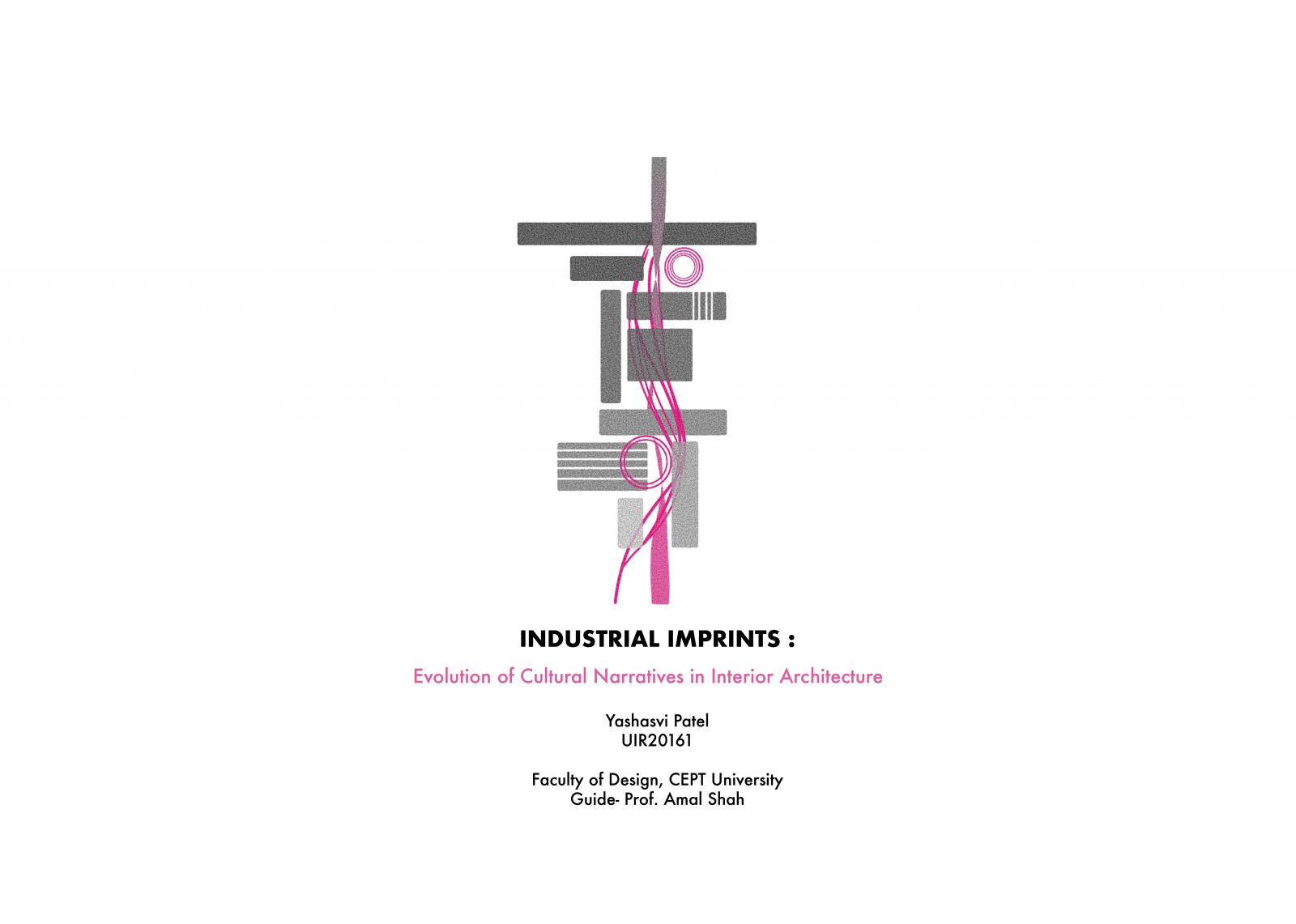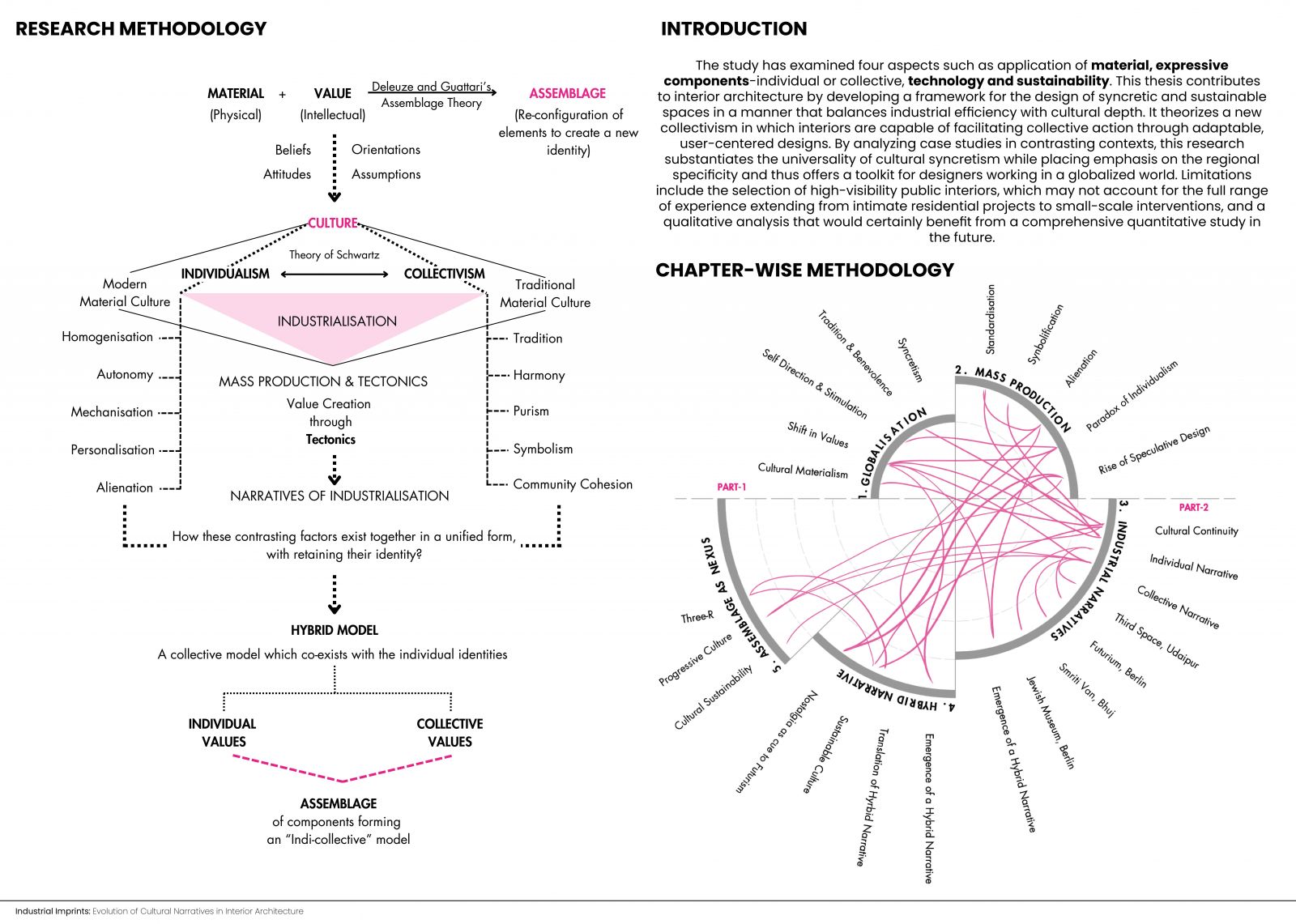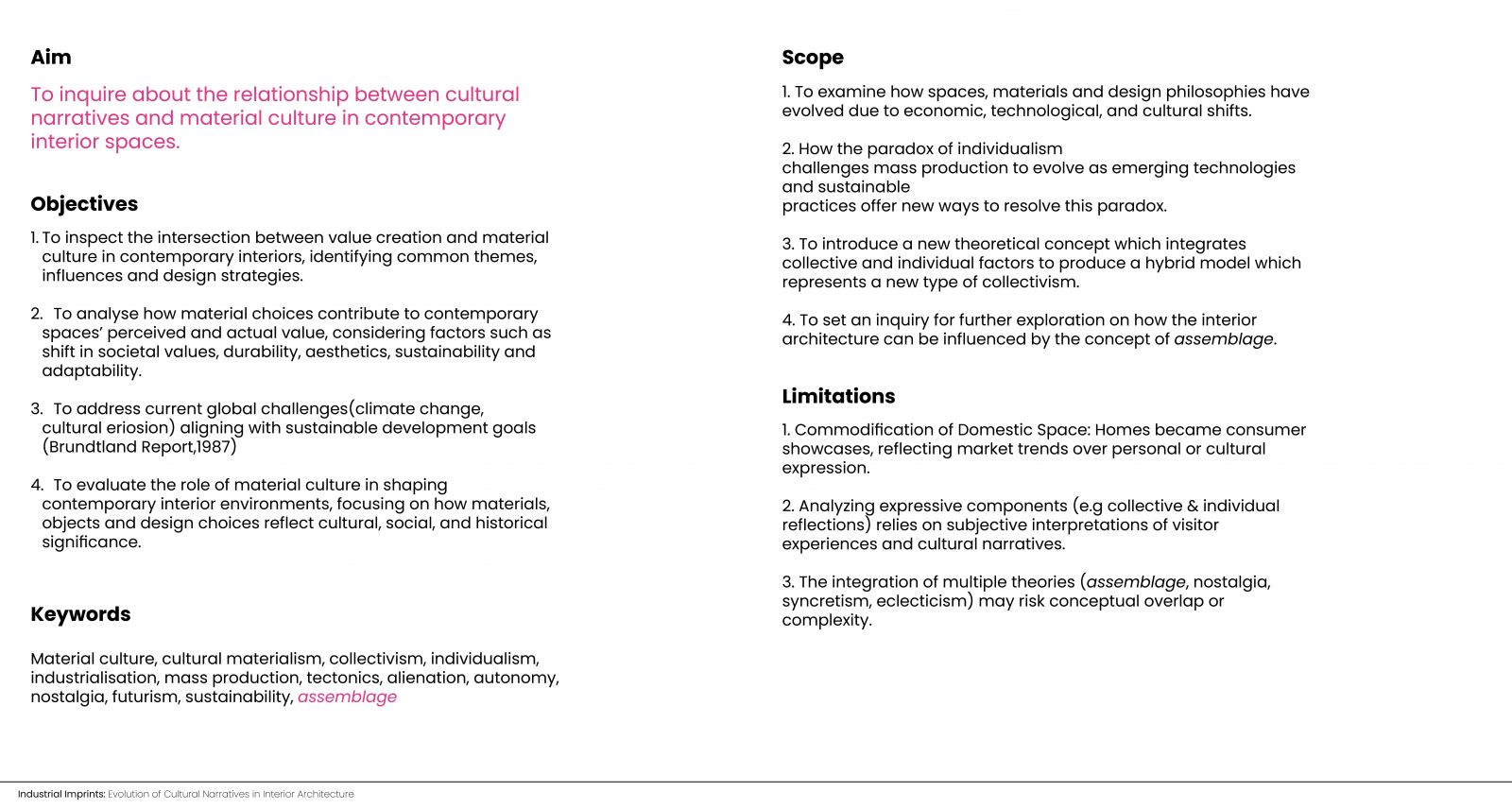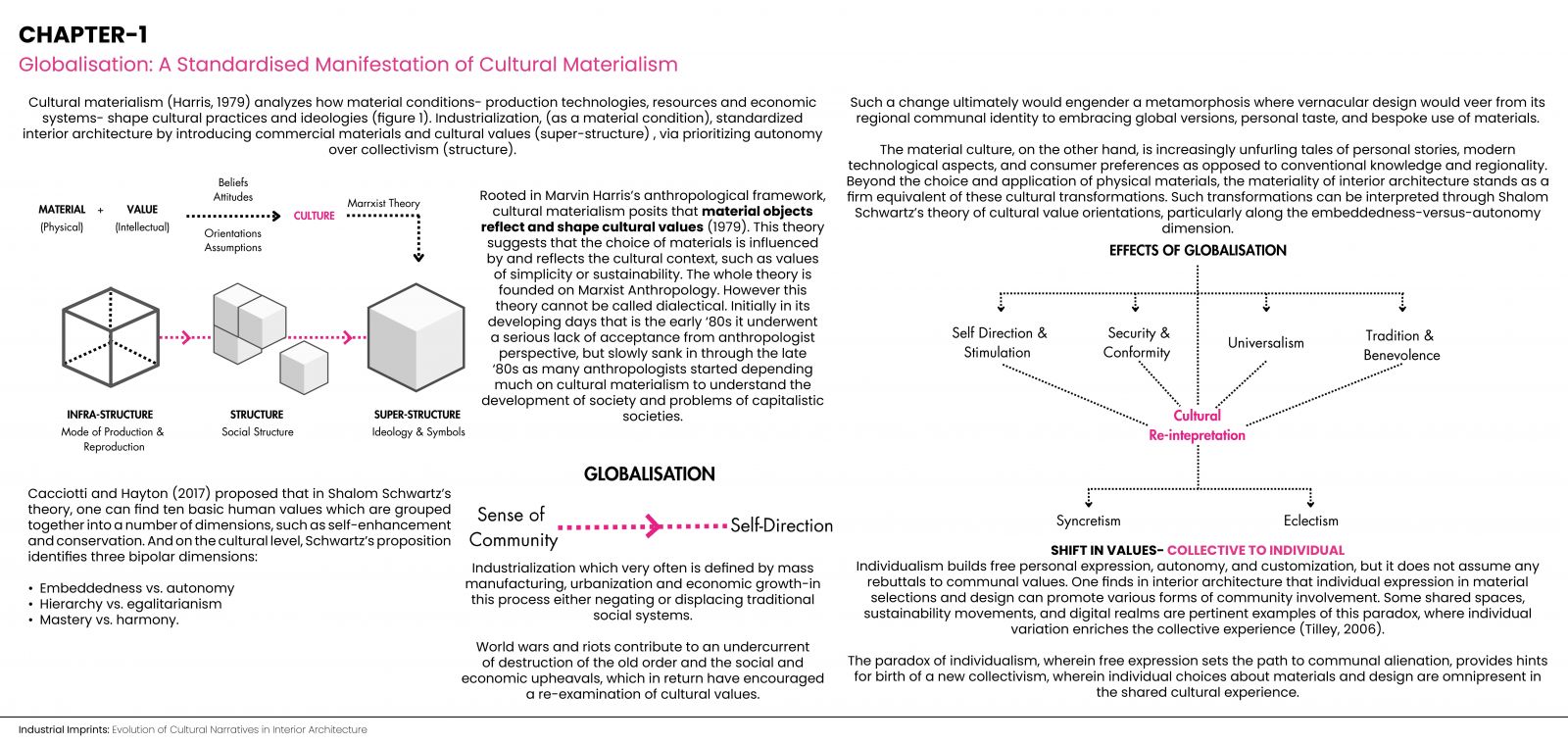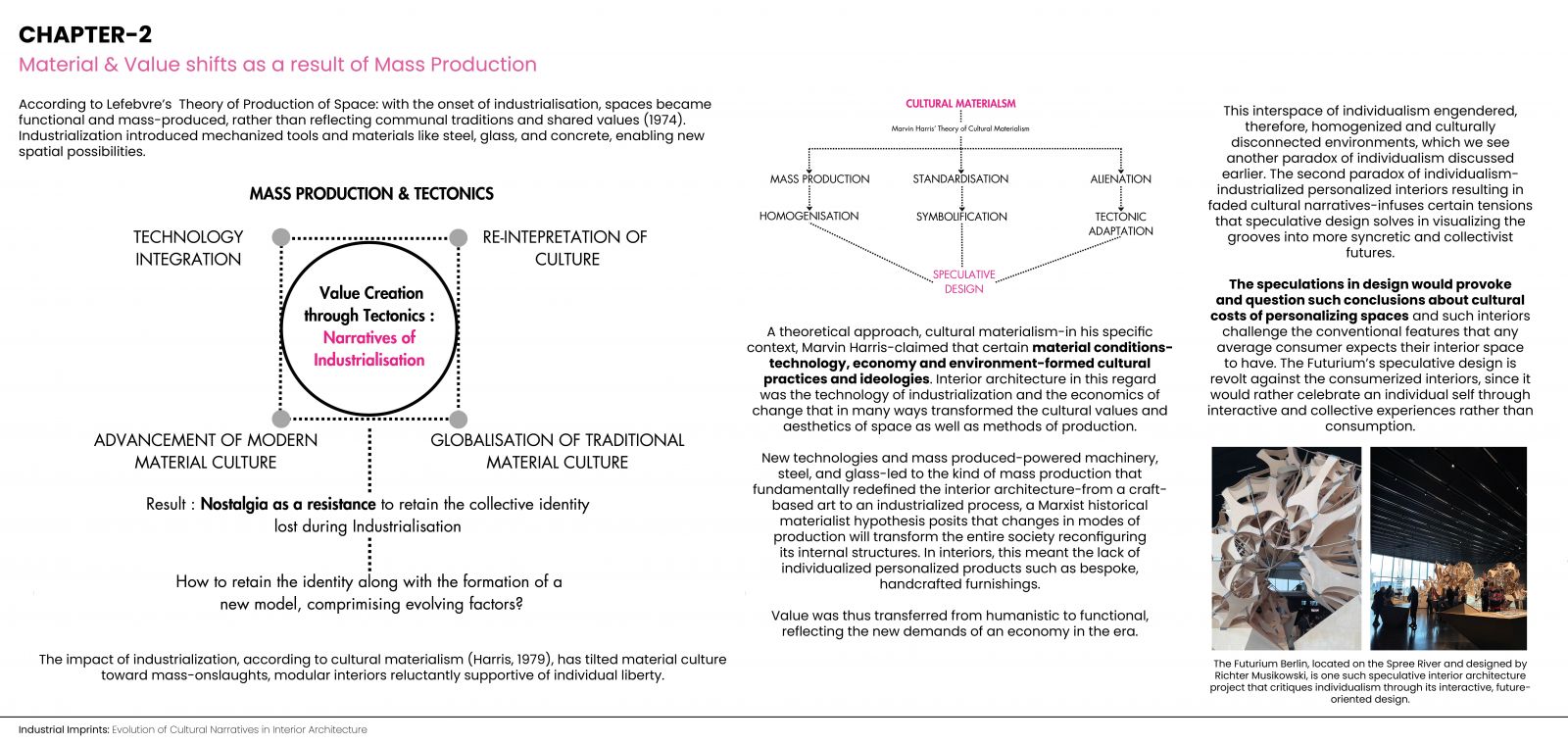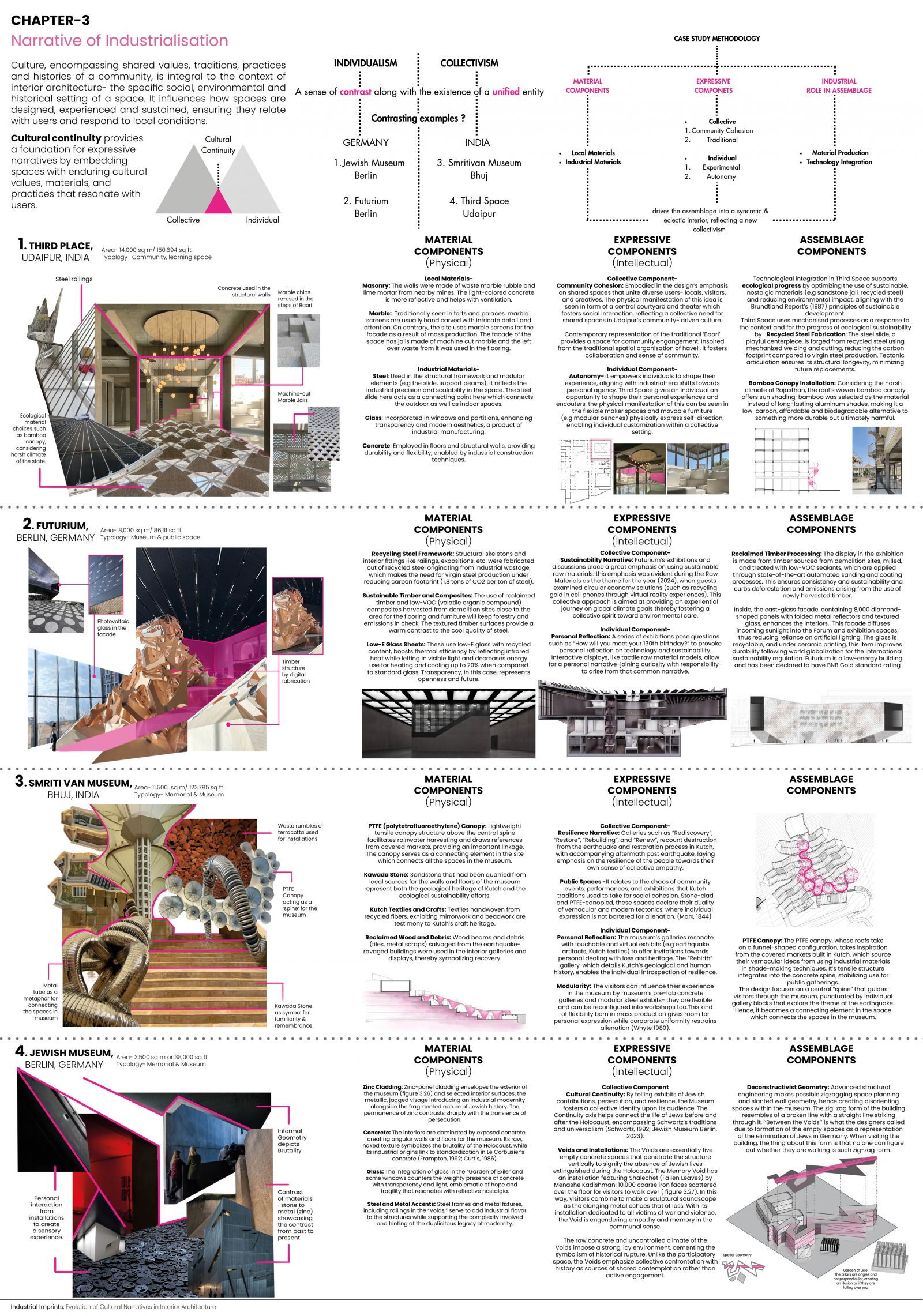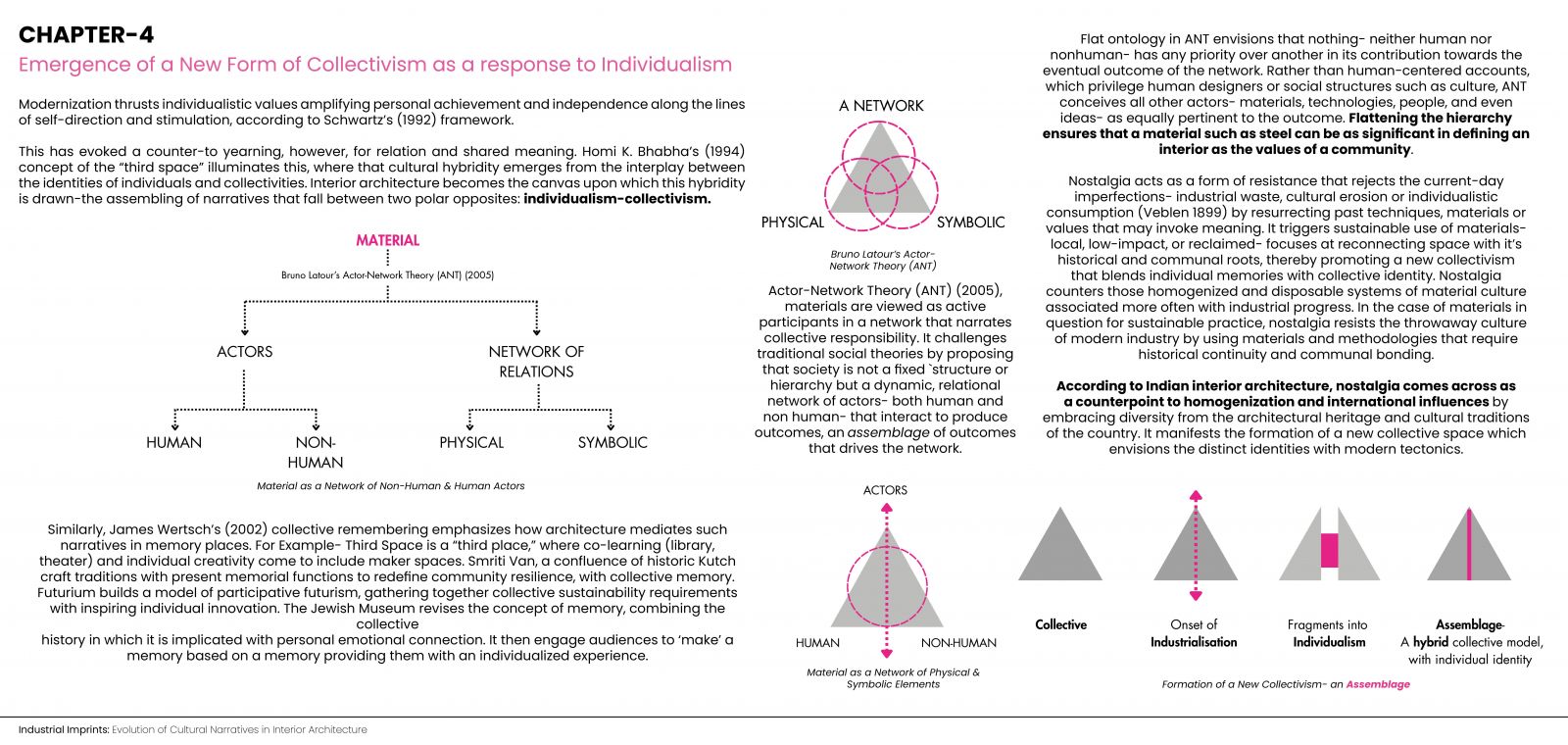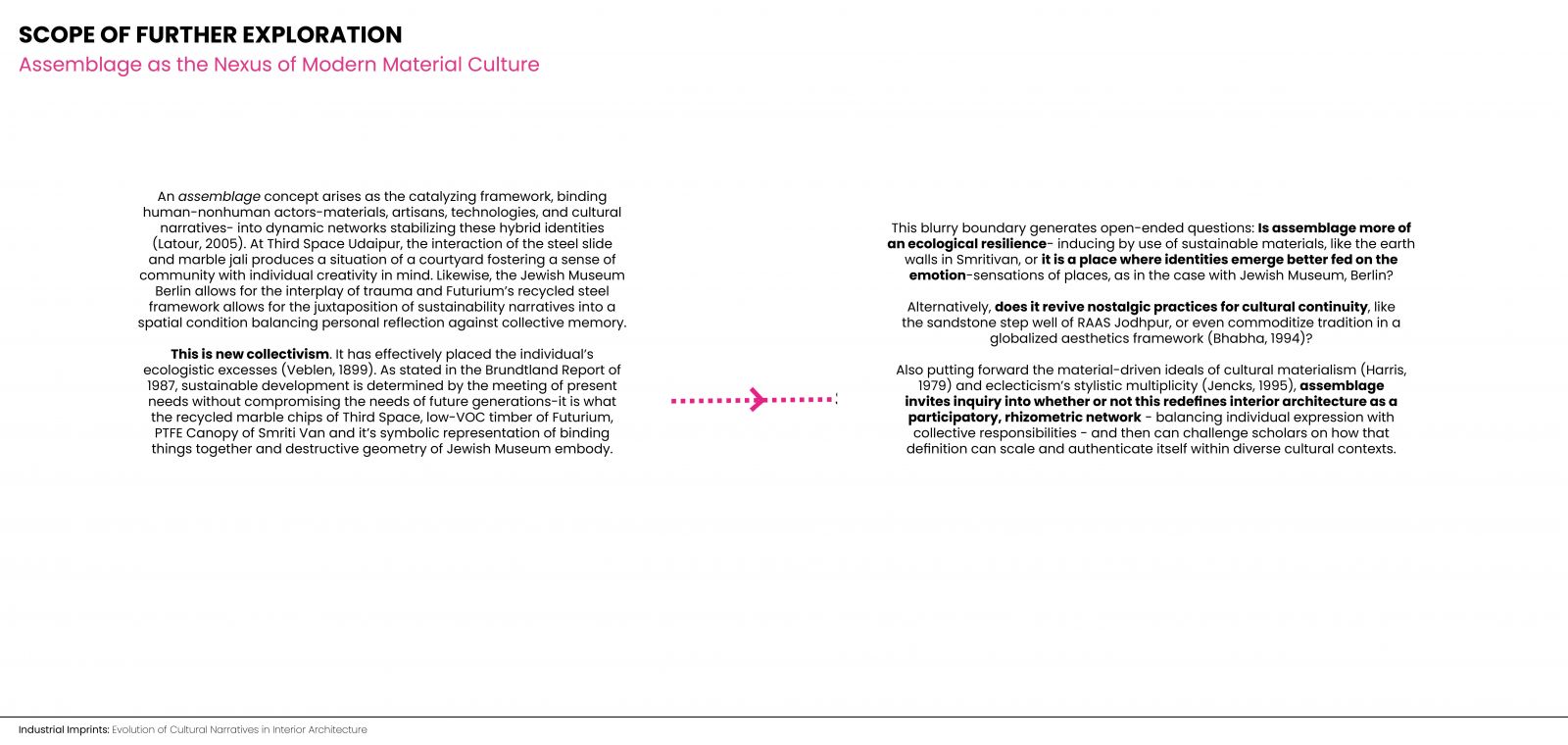Your browser is out-of-date!
For a richer surfing experience on our website, please update your browser. Update my browser now!
For a richer surfing experience on our website, please update your browser. Update my browser now!
This thesis, titled Industrial Imprints: Evolution of Cultural Narratives in the Interior Architecture, probes how contemporary interior architecture mediates the gap between industrial homogenization and cultural particularity and how that mediational practice creates spaces that are syncretic and eclectic in nature to develop collective identity whereas allowing for global undercurrents. From a range of case studies from contrasting contexts- that includes Smritivan Earthquake Memorial and Museum (Bhuj), Futurium Berlin, Jewish Museum Berlin and Third Space Udaipur - this study examines how the choice of materials, tectonic expressions and speculative design strategies negotiate global issues of alienation, commodification, and cultural erosion. This research positions "assemblage" as the central mechanism that implies-
industrialization doesn’t merely impose change but actively assembles diverse influences-
materials, cultures, styles- into interior spaces that reflect both unity and multiplicity.
It represents the fluid, relational nature of these spaces, offering a final insight into how they evolve as products of industrial imprints, cultural negotiation, and creative curation.
Assemblage serves as the dynamic nexus through which modern material culture
gathers and reconfigures cultural elements into interior
architecture that embodies individualism and collectivism, revealing a continuous
process of evolution where diverse elements coexist, adapt, and redefine spatial identity.
